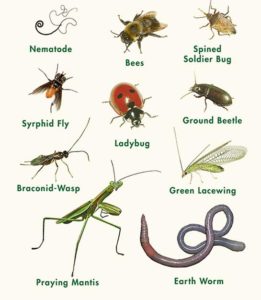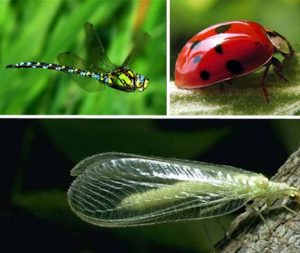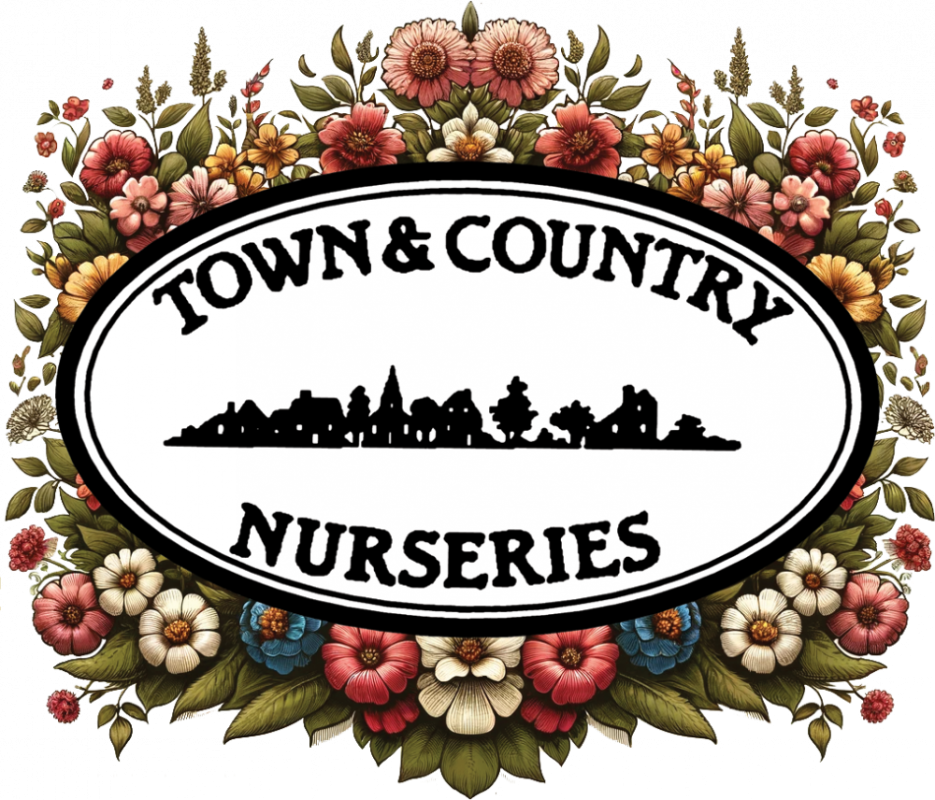Beneficial Insects
Beneficial insects (sometimes called beneficial bugs) are any of a number of species of insects that perform valued services. These helpful creatures aid in decomposing plant material and plant waste and breaking it down into fertilizer, pollinate crops, aerate and improve soil and devour pests which are harmful to your crops. For this reason, you should consider keeping them around.
The best way to draw these beneficial bugs into garden is by growing their favorite flowering plants. Even though predation is the goal, most predatory insects also need nectar and pollen as a source of food. That’s because they are often predatory in just one stage of their life cycle (most insects go through four stages in their life cycle: egg, larvae, pupae and adult), but need these plants-based food sources in other stages.
GOOD BUGS

The following are some beneficial insects and pests they prey on:
- Praying Mantis- All types of insects
- Spiders- All types of insects
- Ladybug– aphids & mites
- Lacewing– scale, aphids & mites
- Syrphid Fly– aphids and mites
- Soldier Bug aka Stink Bug– caterpillars
- Braconid-Wasp– cabbageworm, gypsy moth, aphids and caterpillars
- Ground Beetle– slug, snail, Colorado potato beetle, gypsy moth & caterpillars
Attracting Beneficial Insects to Garden
- Identifying the insects in your garden will be the most helpful tool
- Dill almost attracts every kind of beneficial insect
- Sweet aylssum attracts beneficial hoverflies
- Adult lacewings, flower (syrphid) flies and parasitic wasps, for example, feed on flower nectar and pollen
- Research shows that ample flowers not only sustain adult beneficial insects, but also allow longer survival and production of more progeny, thus increasing the biological control of undesirable insects.

- Use a wide variety of attractive plants. Plants that flower at different times of the year can provide beneficials with nectar and pollen when they need it.
- A bird bath or backyard water feature not only attracts birds (another predator of insects), but also attracts Beneficial’s
- Don’t use pesticides — these kills beneficials too, which usually have a slower reproductive cycle than your pests, so the pests will quickly bounce back into a beneficial-insect-free environment….
Early Blooming
- Basket of Gold Aurinia saxatilis
- Rocky Mountain penstemon Penstemon strictus
- Native potentilla Potentilla verna
- Creeping thyme Thymus serpyllum
- Sweet alyssum Lobularia maritima
- Columbine Aquilegia x hybrida
- Carpet bugleweed Ajuga reptans
Mid-season Blooming
- Common yarrow Achillea filipendulina `Coronation Gold’
- Dwarf alpine aster Aster alpinus
- Spike speedwell Veronica spicata
- Wine cups (Poppy mallow) Callirhoe involucrata
- Cilantro (Coriander) Coriandrum sativum
- English lavender Lavandula angustifolia
- Sulfur cinquefoil Potentilla recta `Warrenii’
- Edging Lobelia Lobelia erinus
- Mint Mentha sp.
- Stonecrop (various) Sedum sp.
Late Blooming
- Fernleaf yarrow Achillea millefolium
- Lavender globe lily Allium tanguticum
- Dill Anethum geraveolens
- Dyer’s camomille Anthemis tinctoria
- Fennel Foeniculum vulgare
- Sea lavender Limonium latifolium
- Wild bergamot Monarda fistulosa
- European goldenrod Solidago virgaurea
